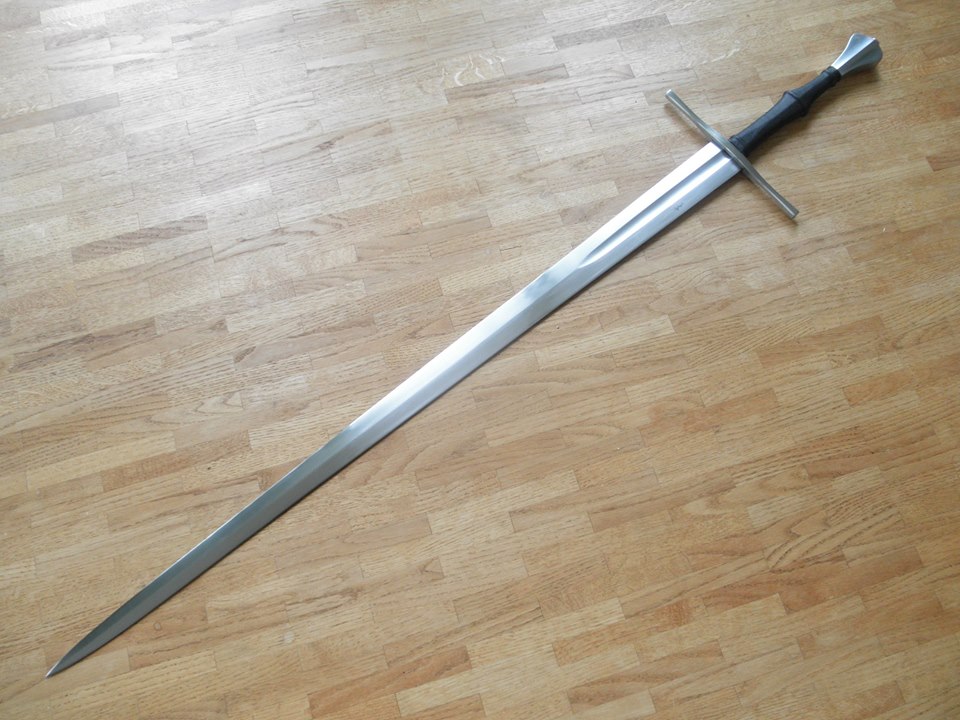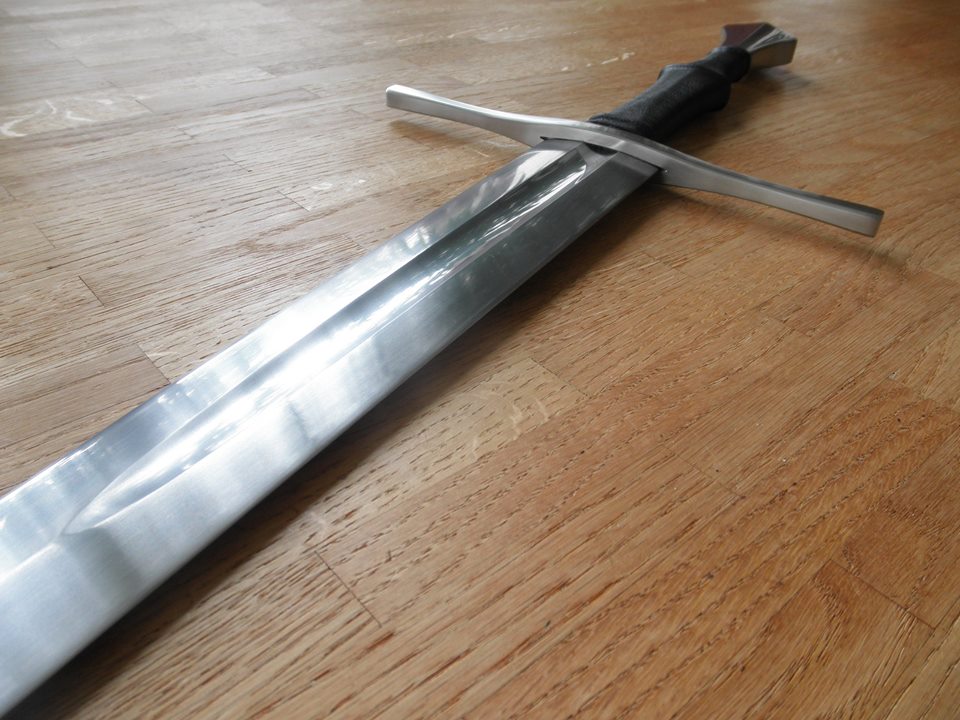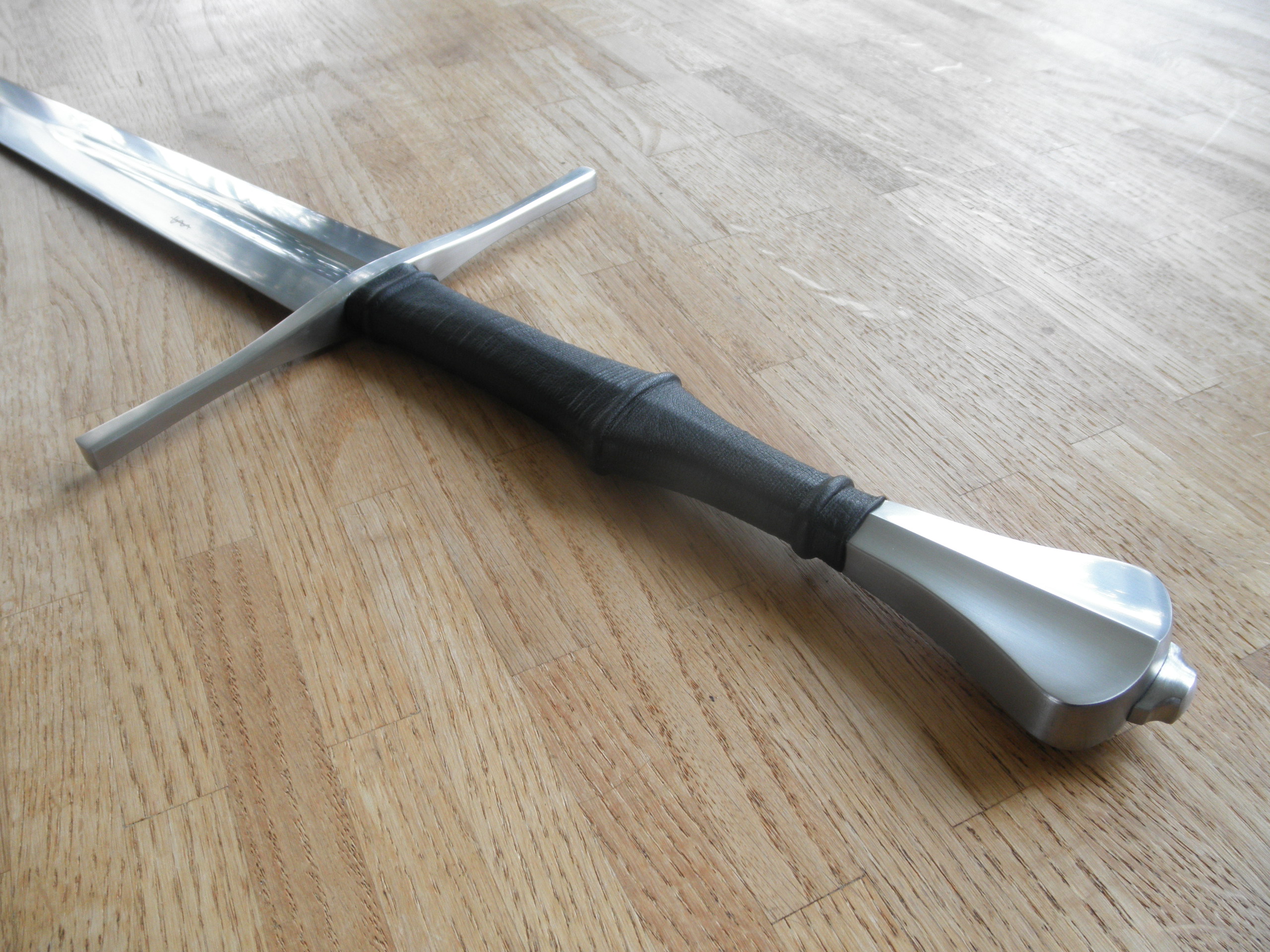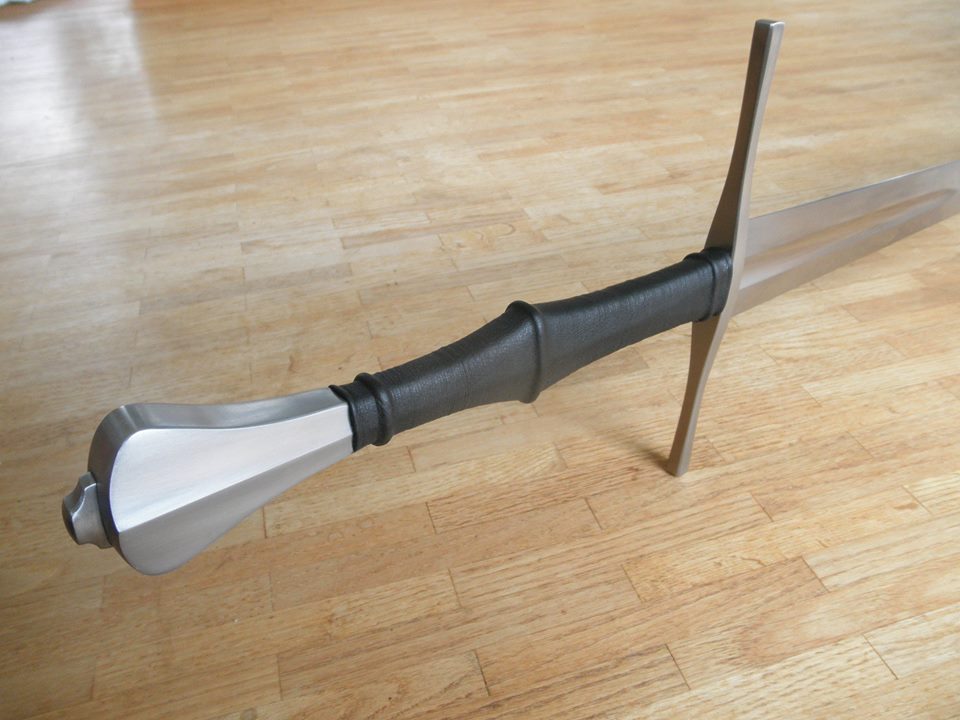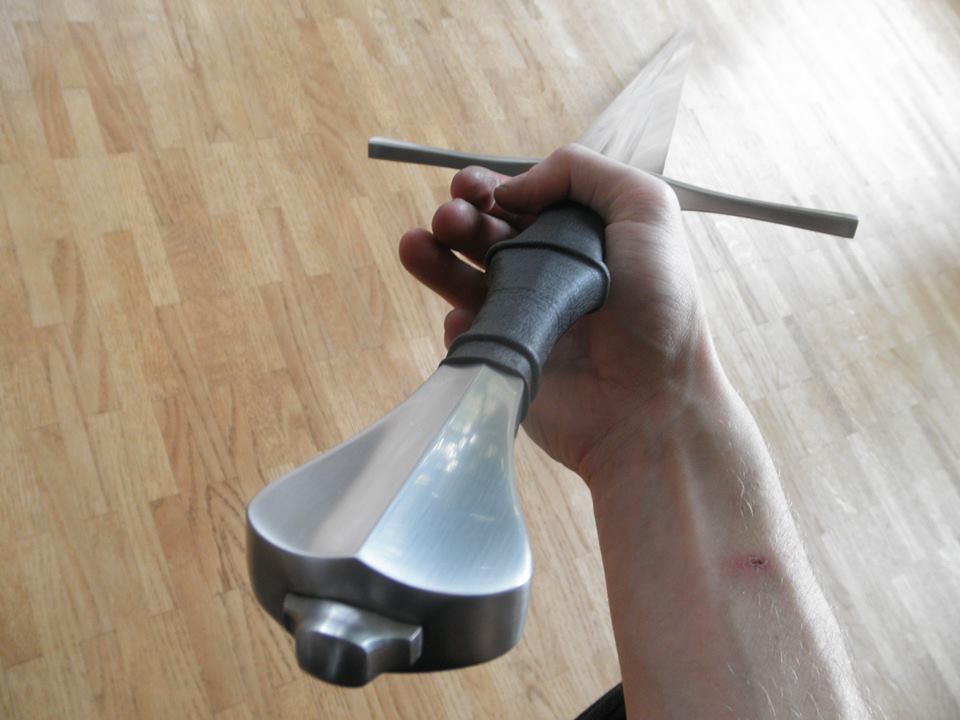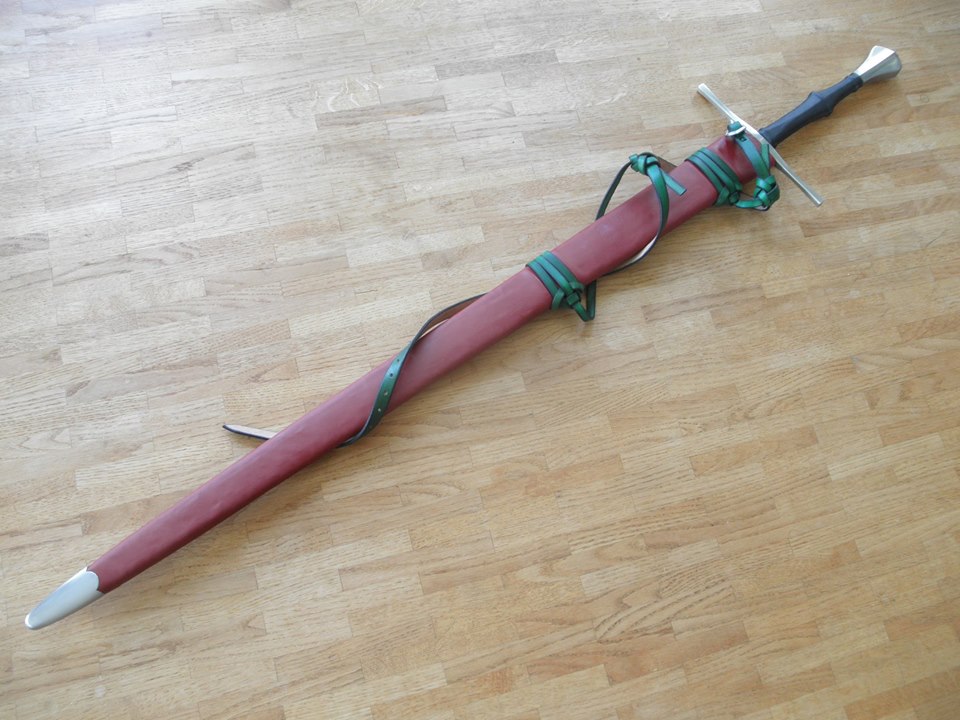Stats:
Steel: 56Si7, heat treated to 57-58Rc by fellow sword maker Daniel Rosenfeld
Overall length: 122.5cm (48“)
Blade length: 94cm (37“)
Handle length: 19cm (7.5“)
Blade width at base: 5.2cm (2“)
PoB: 11cm (4.3“)
CoP: 60cm (23.6“)
Forward pivot point: just behind the tip
Hilt node: 6cm (2.3“) behind guard (just where the handle‘s cross section turns hexagonal)
Weight: 1467g (3.2lbs)
This one is a shorter, handier longsword and solely intended for unarmored combat. It lacks the positively massive, powerful impression of a warsword and instead feels lighter and quicker in hand. It is not without blade presence though. While the sword is intended for two-handed use, single-handed techniques can be performed with it quite well. The blade is wide and thin enough at the tip to allow for efficient cutting all the way to the point. Consequently, the tip is unsuited for penetrating harder targets such as mail though the edge bevels do steepen a bit towards the point to reinforce it. The blade has a good deal of flex in the last third but is stiff enough for thrusts into soft targets. The lower half is absolutely rigid, as it should be for winding techniques and the like.
Because the edge is formed on a fairly thin body, I shaped the final sharpness at a slightly obtuse angle to allow for enough support should the edge encounter something harder than just soft targets. The edge is still plenty acute enough to fulfill its role as intended for unarmored combat.
In hand(s), the sword is very agile, offering excellent point control and effortless handling. Change of directions and complex blade actions come naturally and put no strain on the user. All aspects of longsword blossfechten following the teaching of Liechtenauer can be executed with ease.
Cutting performance is very, very good. The sword cuts deeply and effortlessly.
This sword was reviewed twice, by Peter Smallridge and also Dave Rawlings. You can find links to both reviews in the “Review section”.
